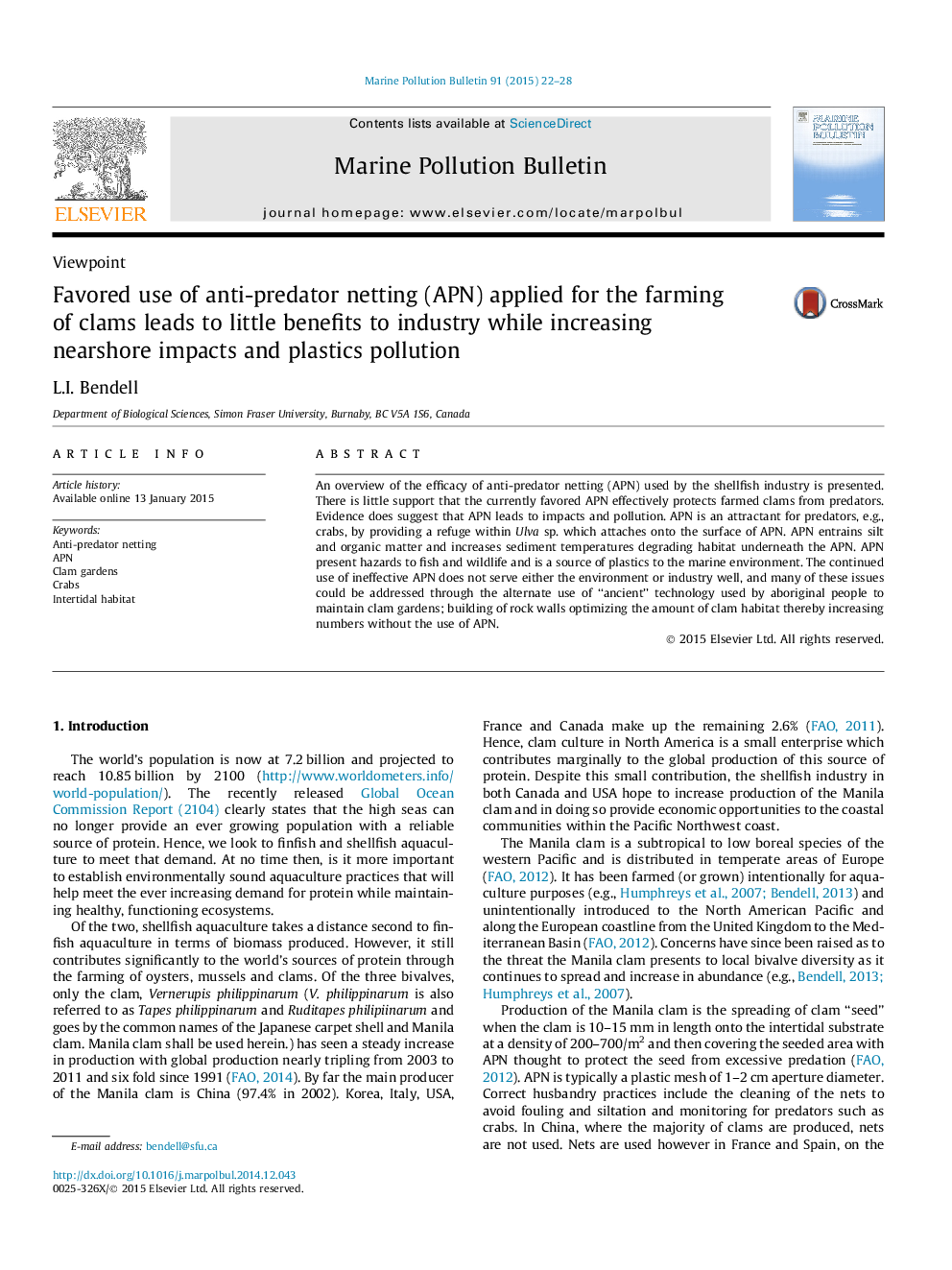| Article ID | Journal | Published Year | Pages | File Type |
|---|---|---|---|---|
| 6357501 | Marine Pollution Bulletin | 2015 | 7 Pages |
Abstract
An overview of the efficacy of anti-predator netting (APN) used by the shellfish industry is presented. There is little support that the currently favored APN effectively protects farmed clams from predators. Evidence does suggest that APN leads to impacts and pollution. APN is an attractant for predators, e.g., crabs, by providing a refuge within Ulva sp. which attaches onto the surface of APN. APN entrains silt and organic matter and increases sediment temperatures degrading habitat underneath the APN. APN present hazards to fish and wildlife and is a source of plastics to the marine environment. The continued use of ineffective APN does not serve either the environment or industry well, and many of these issues could be addressed through the alternate use of “ancient” technology used by aboriginal people to maintain clam gardens; building of rock walls optimizing the amount of clam habitat thereby increasing numbers without the use of APN.
Keywords
Related Topics
Physical Sciences and Engineering
Earth and Planetary Sciences
Oceanography
Authors
L.I. Bendell,
